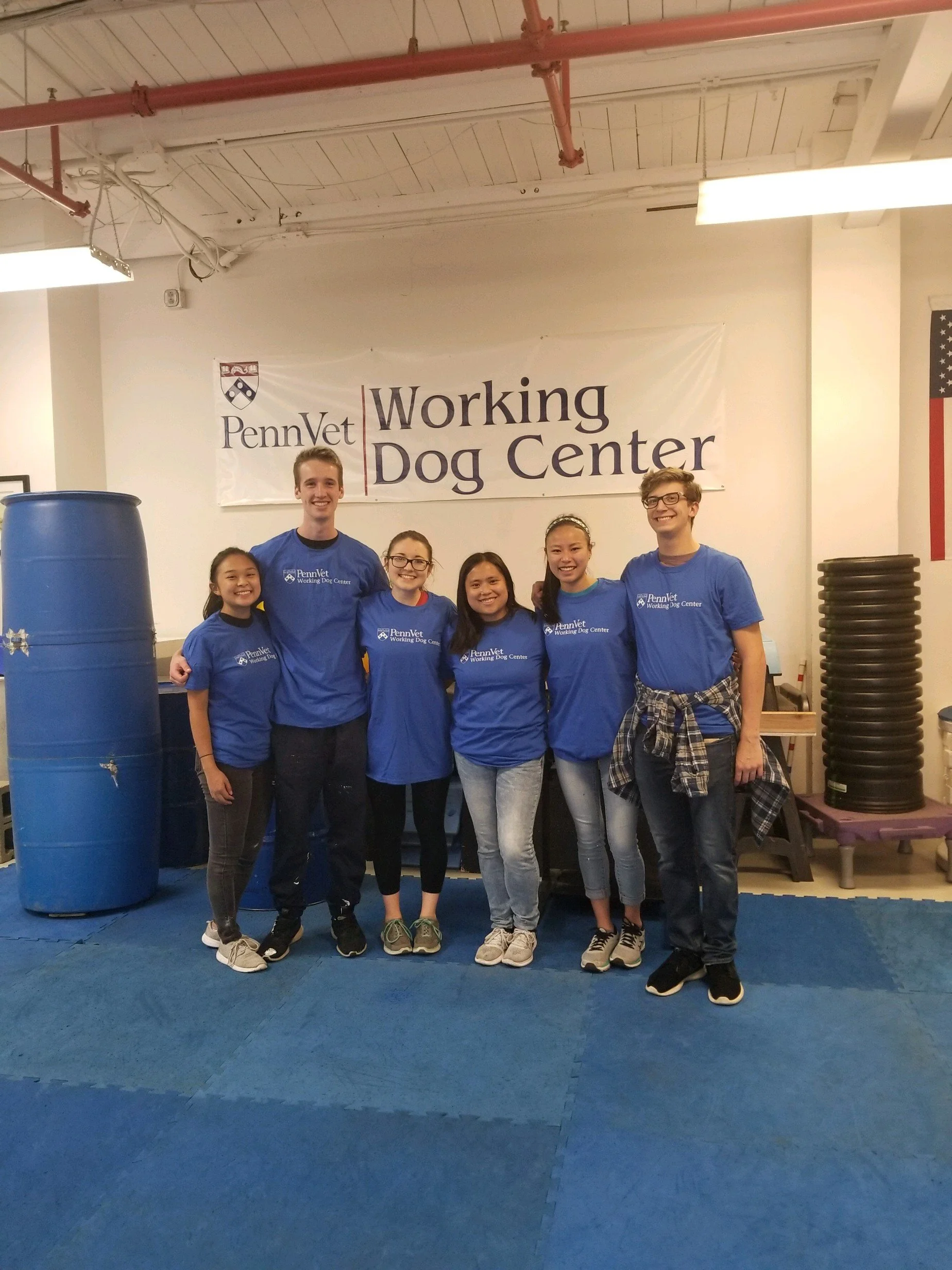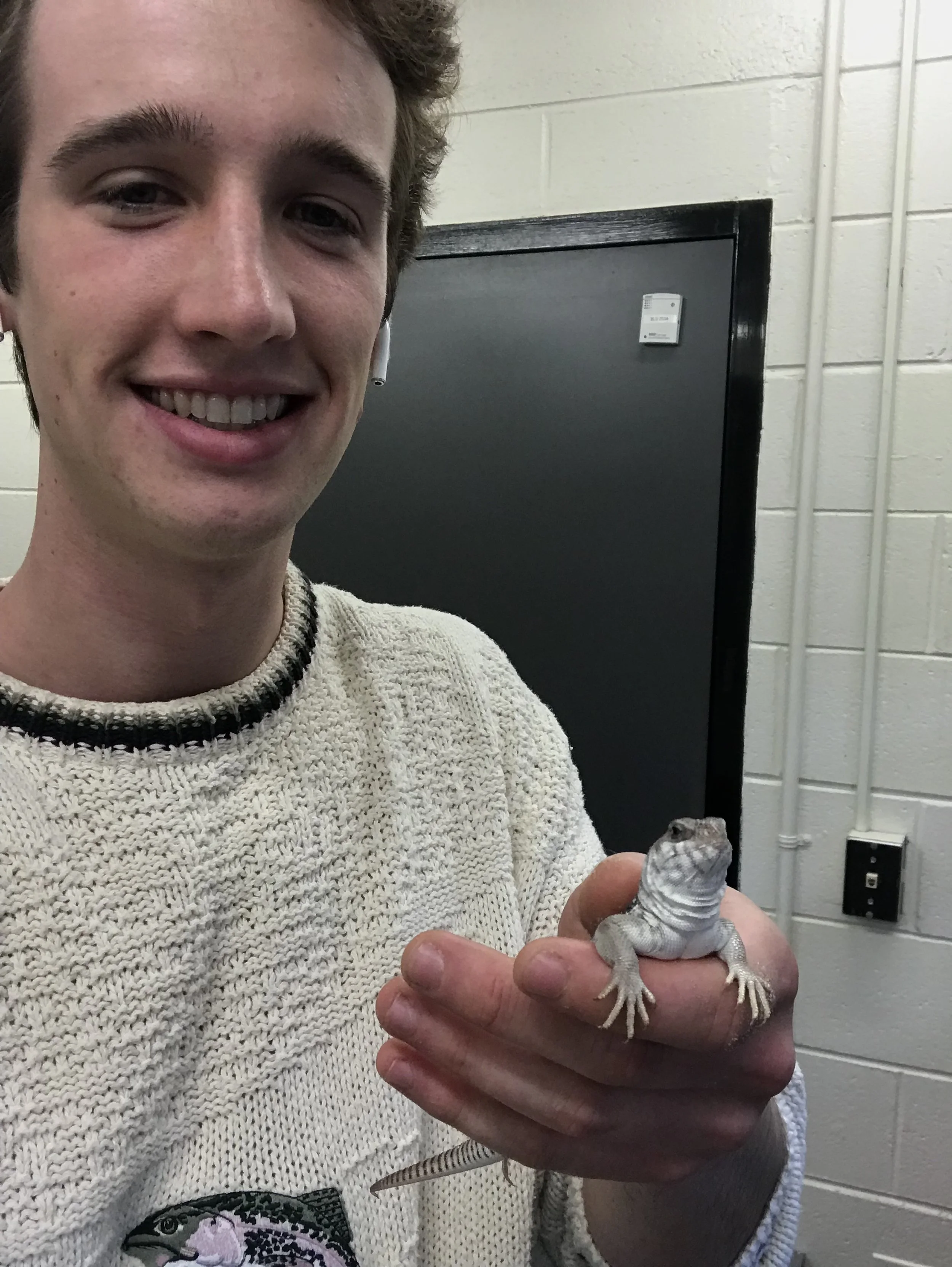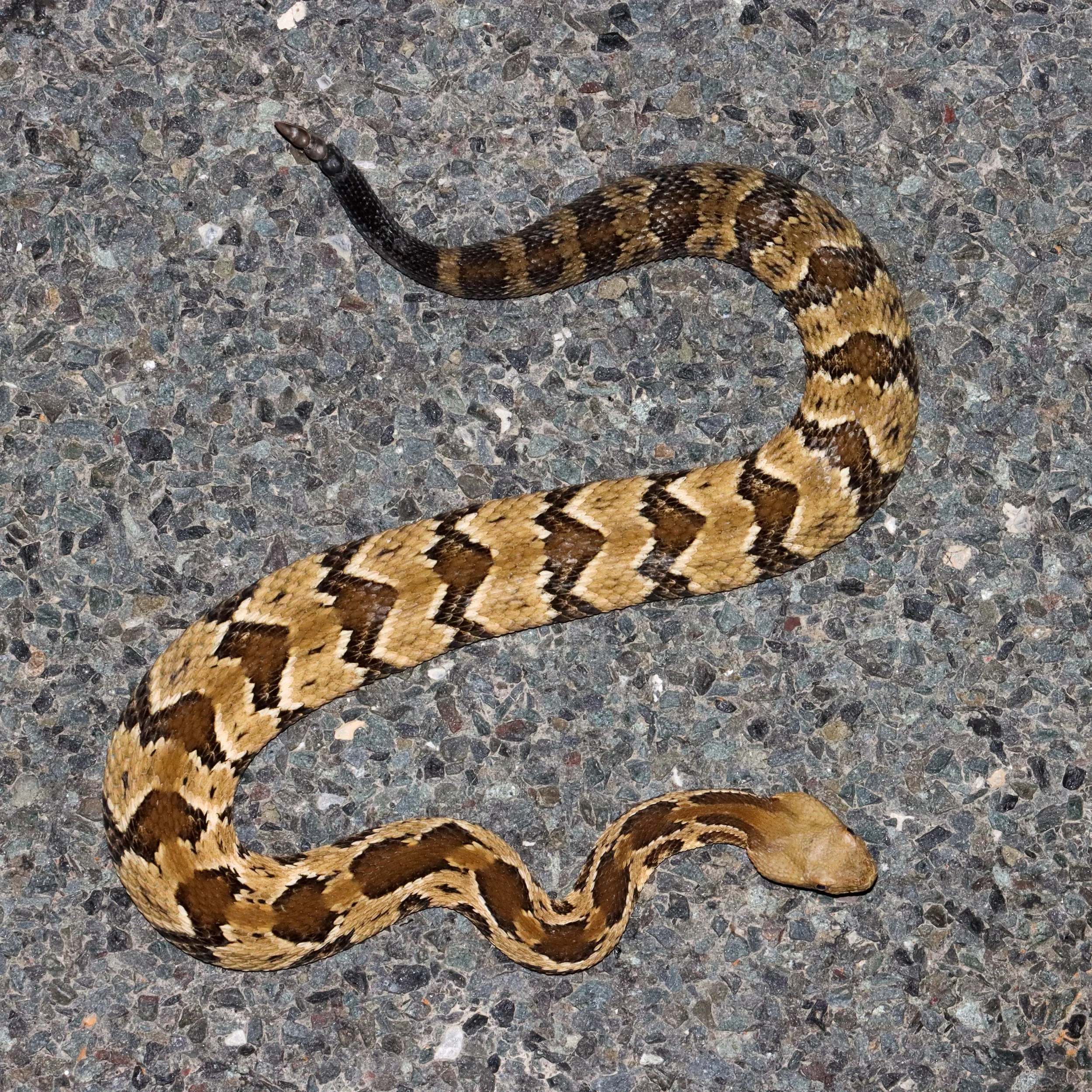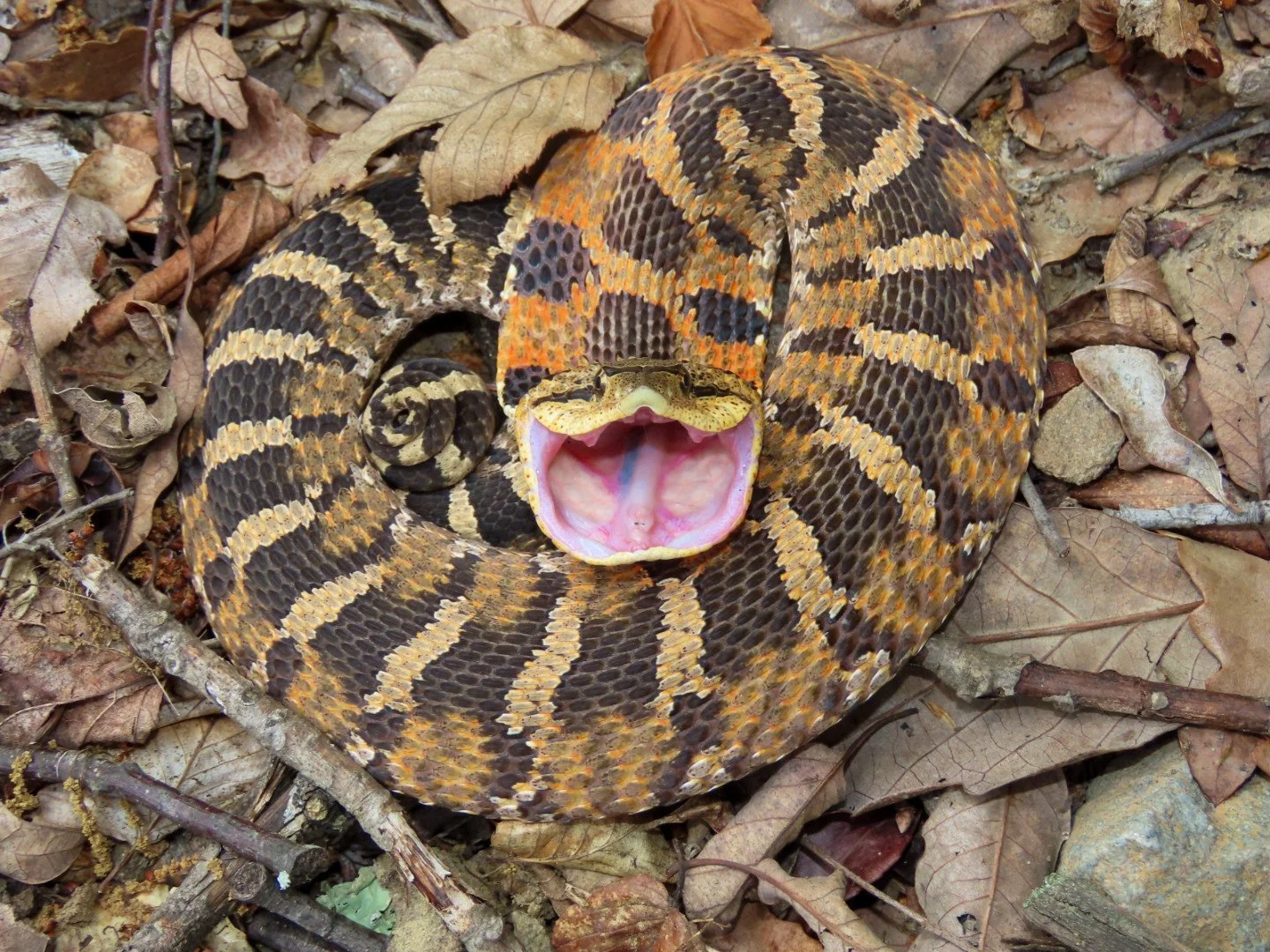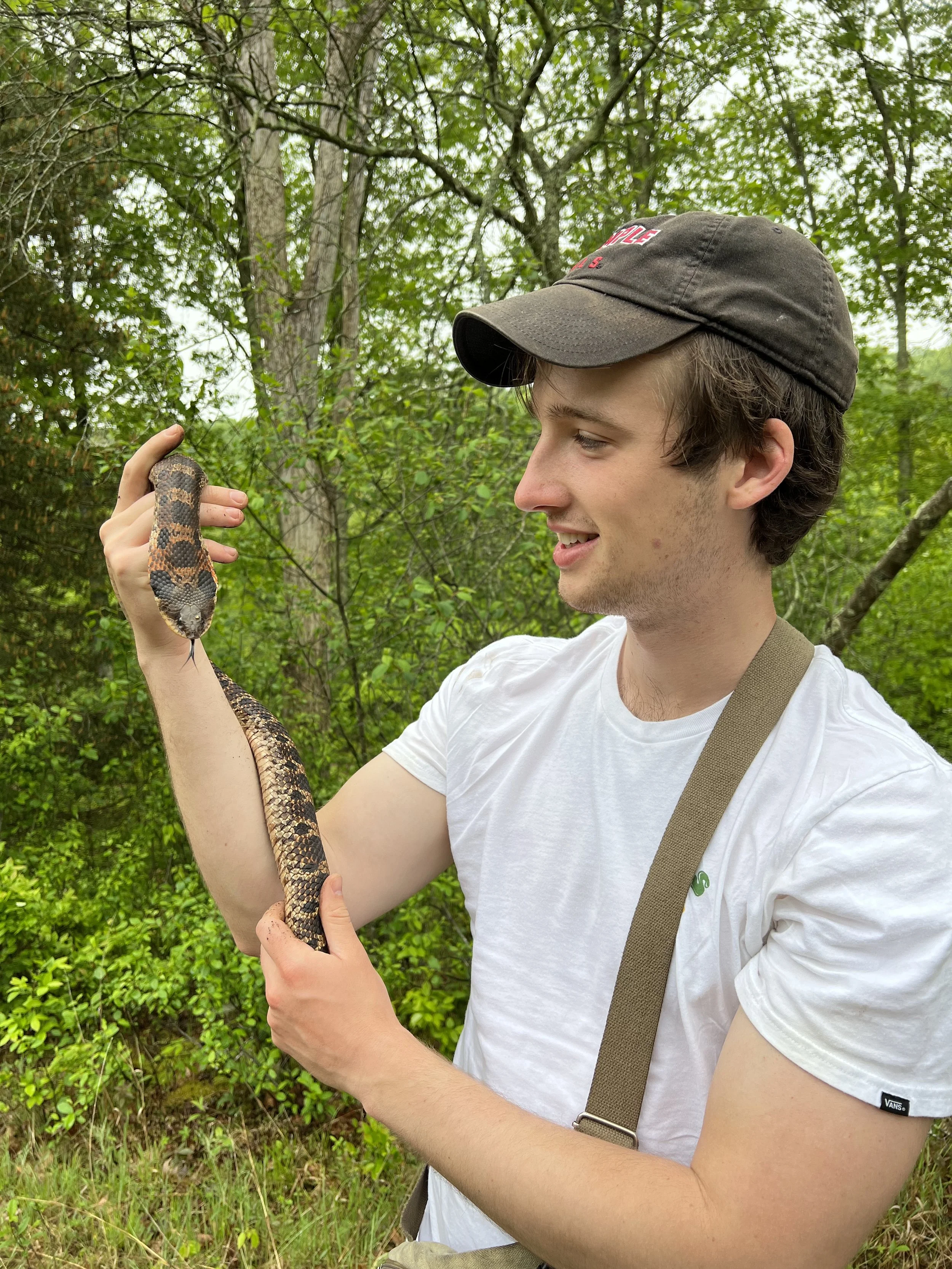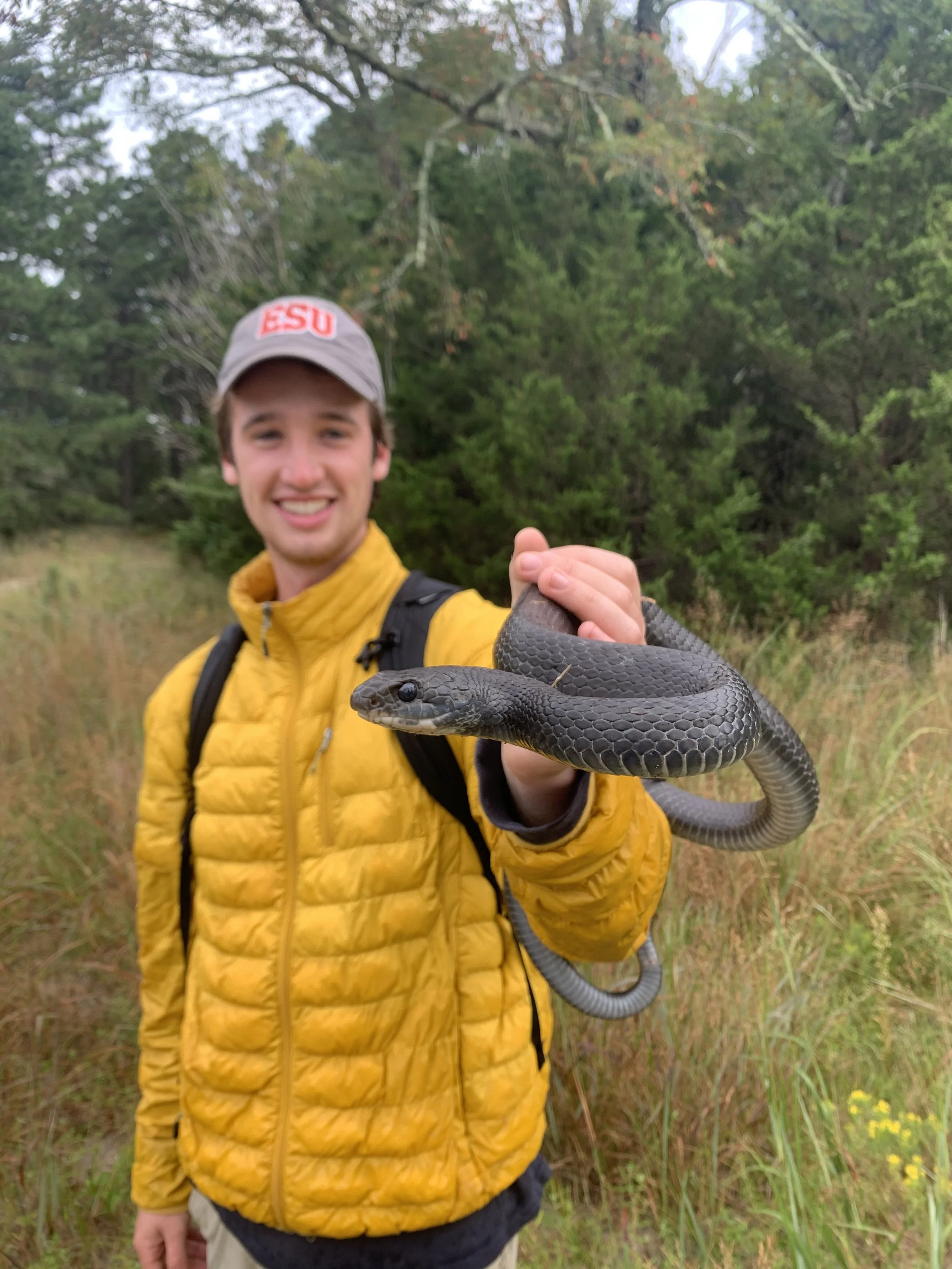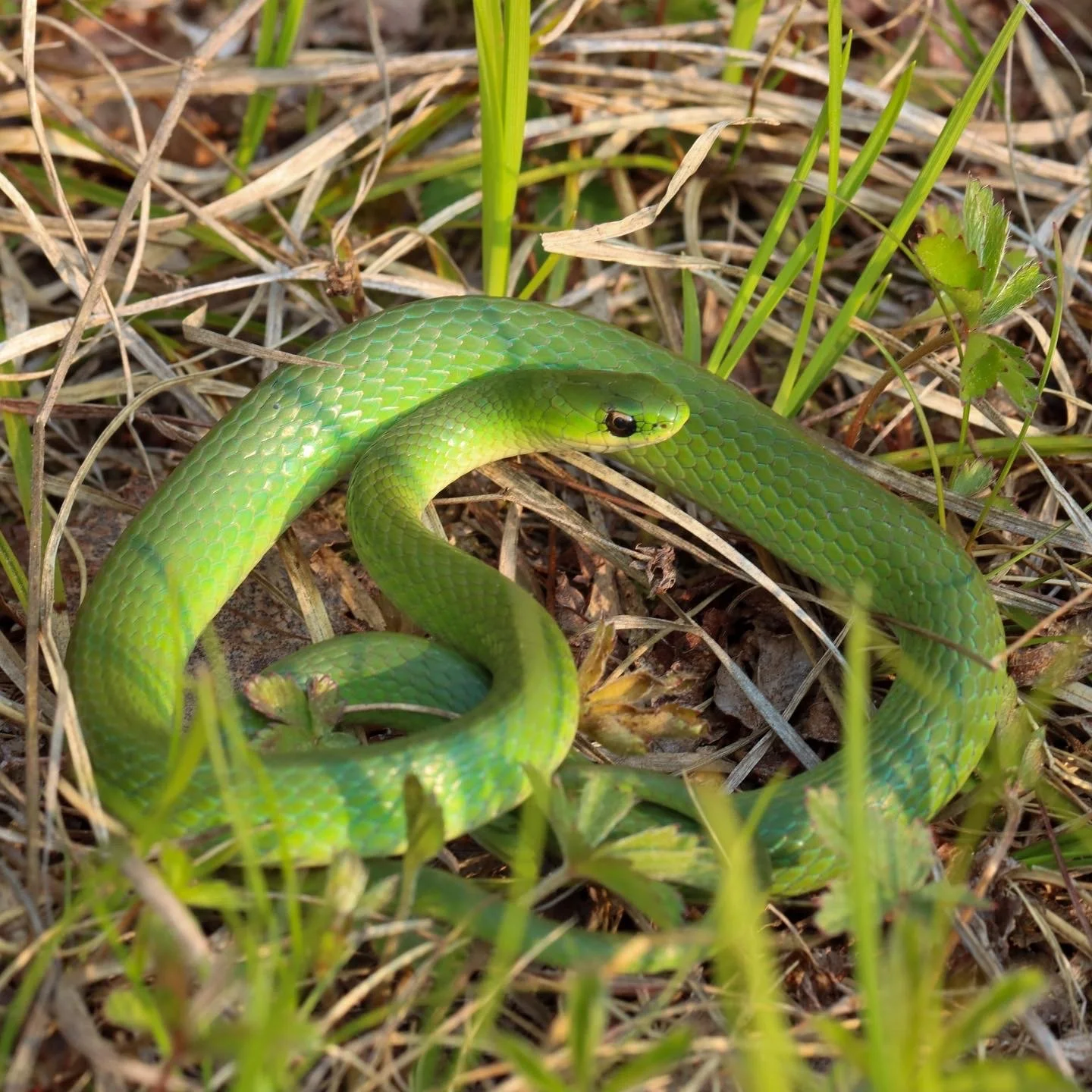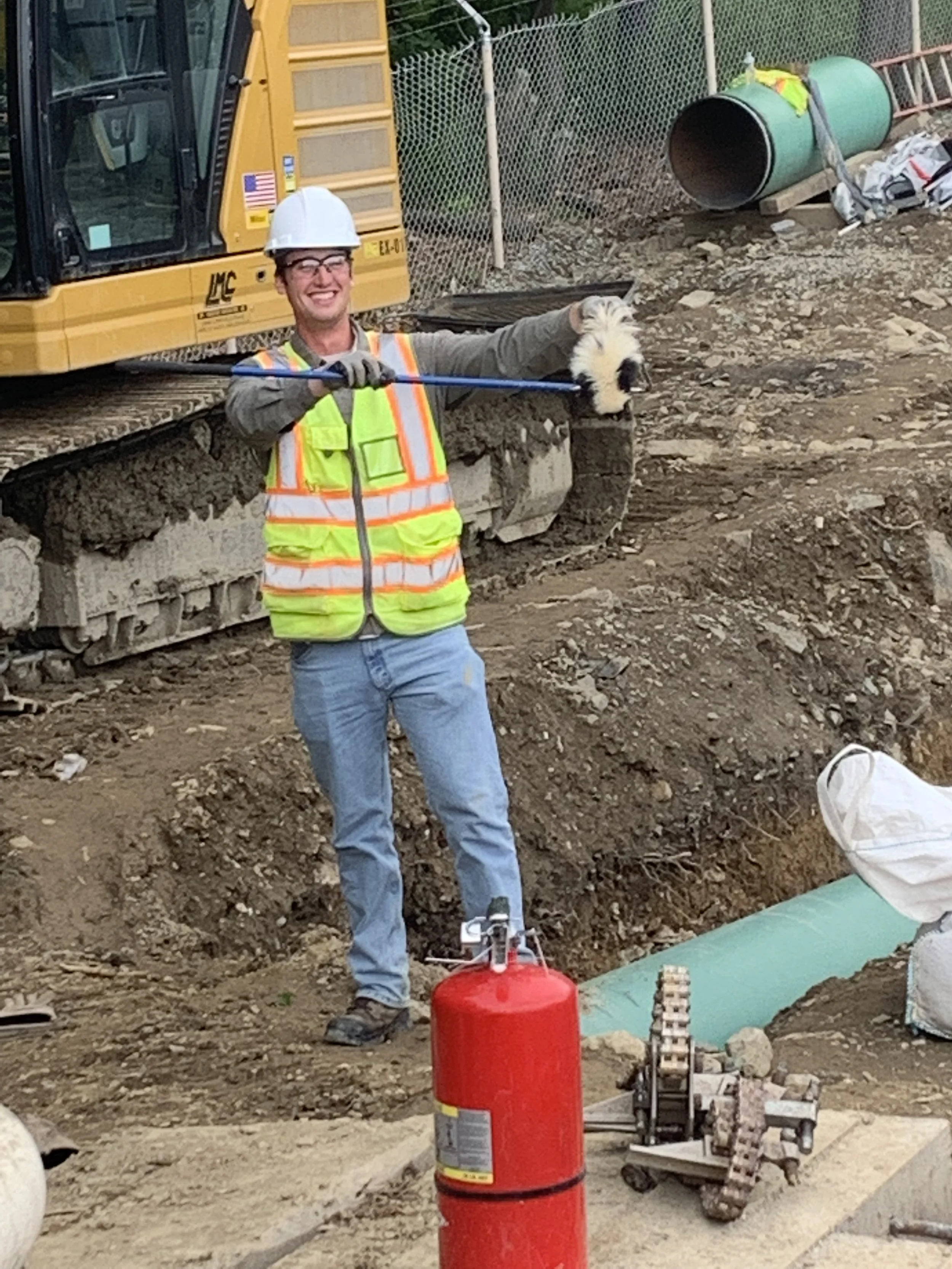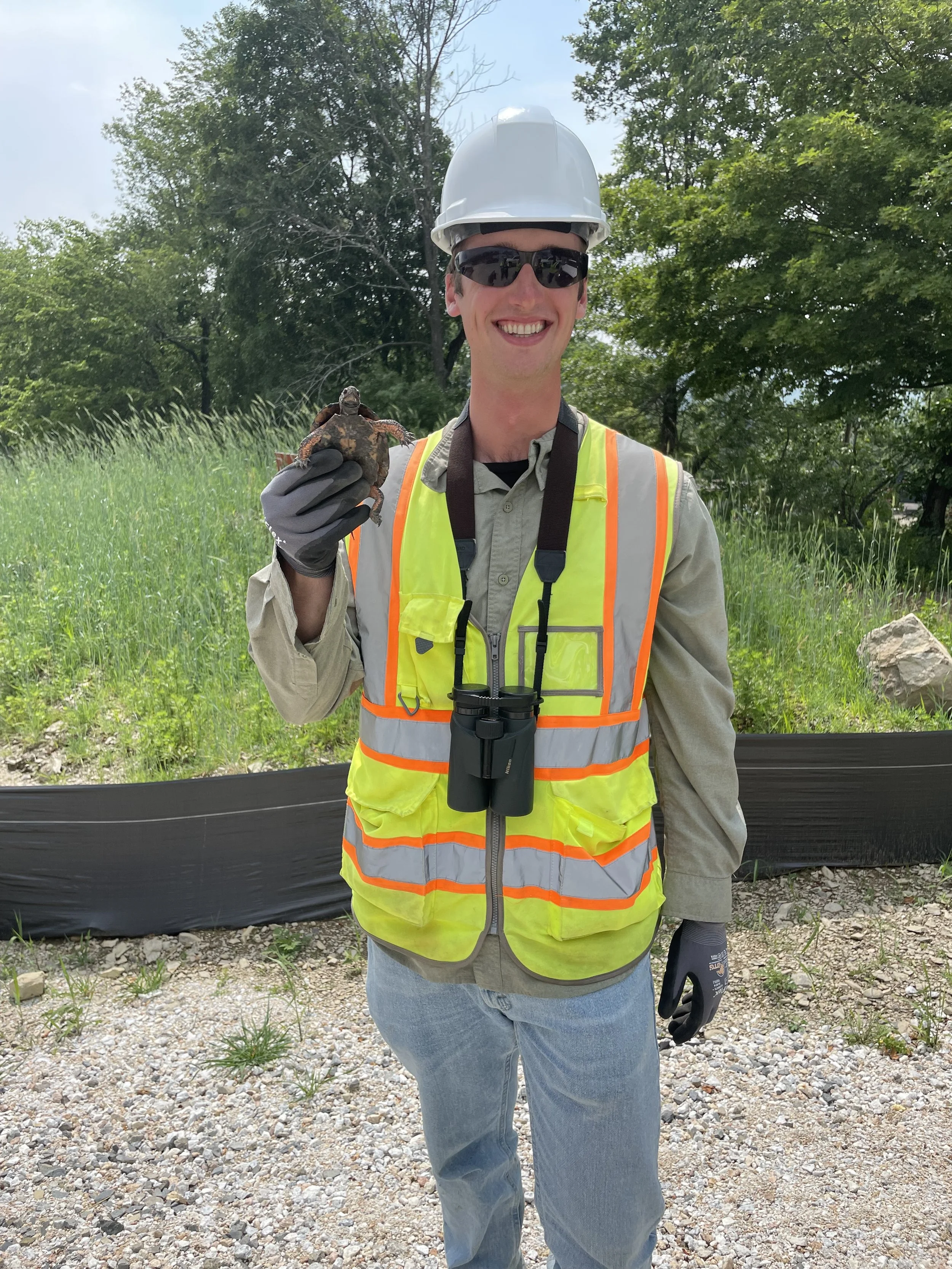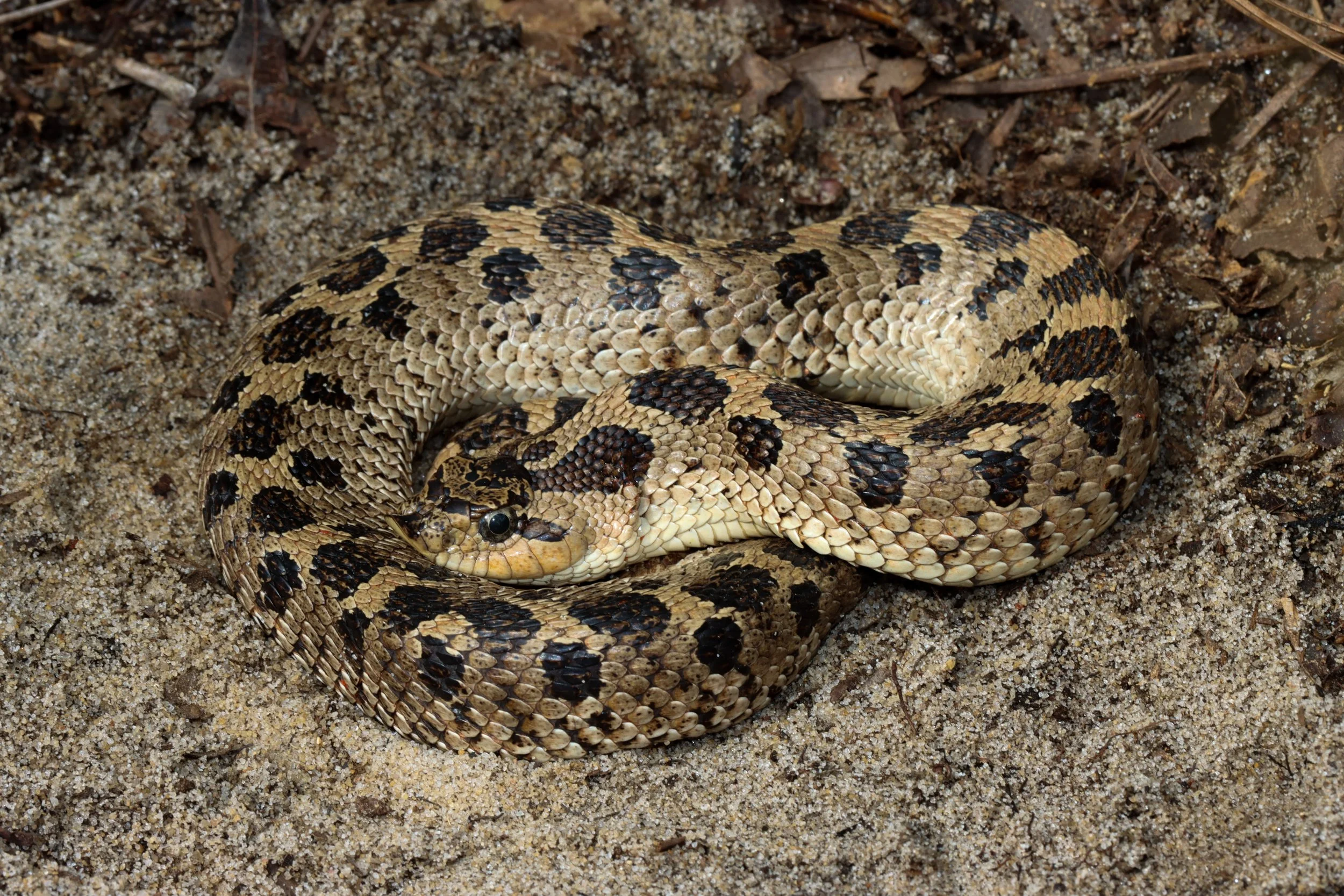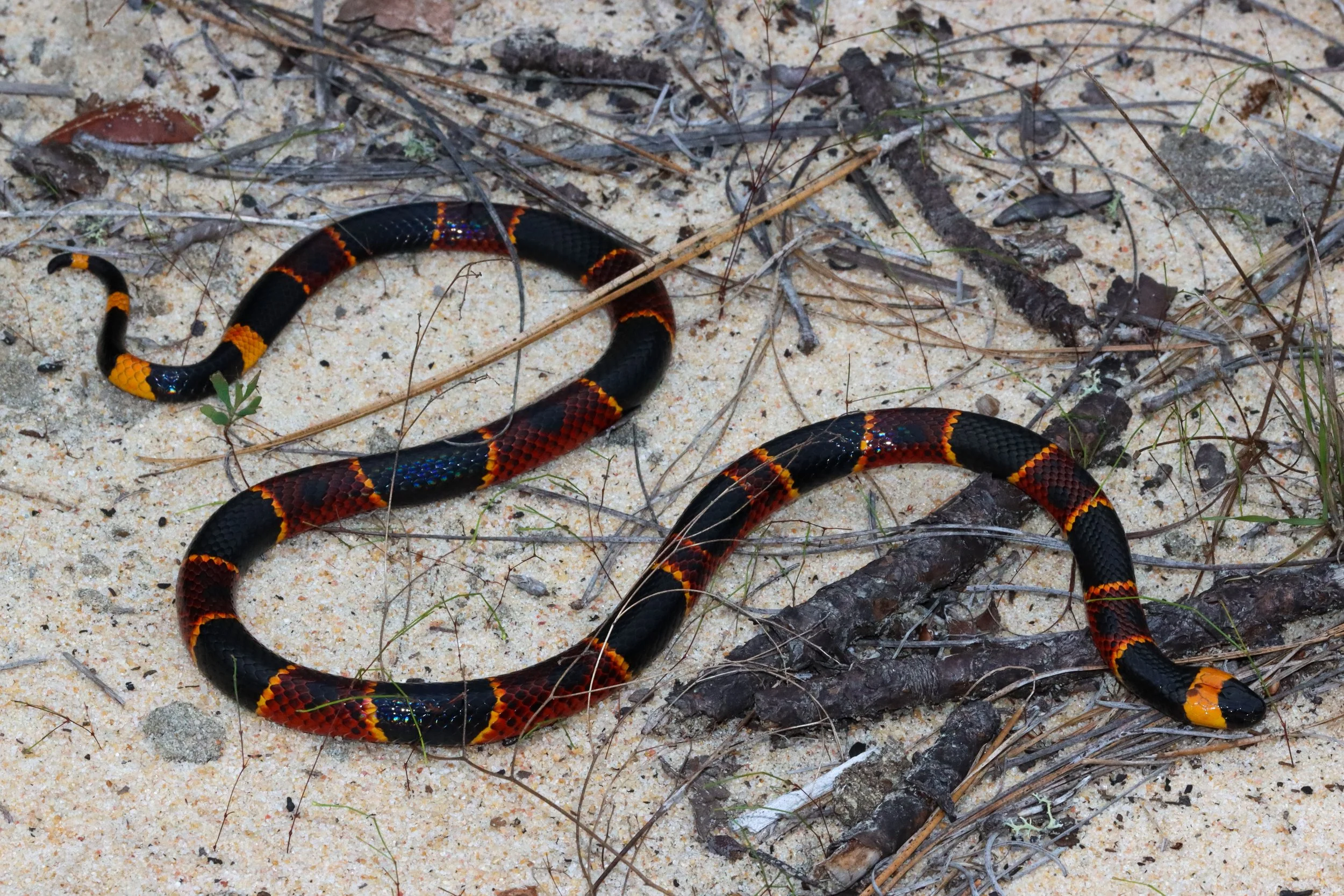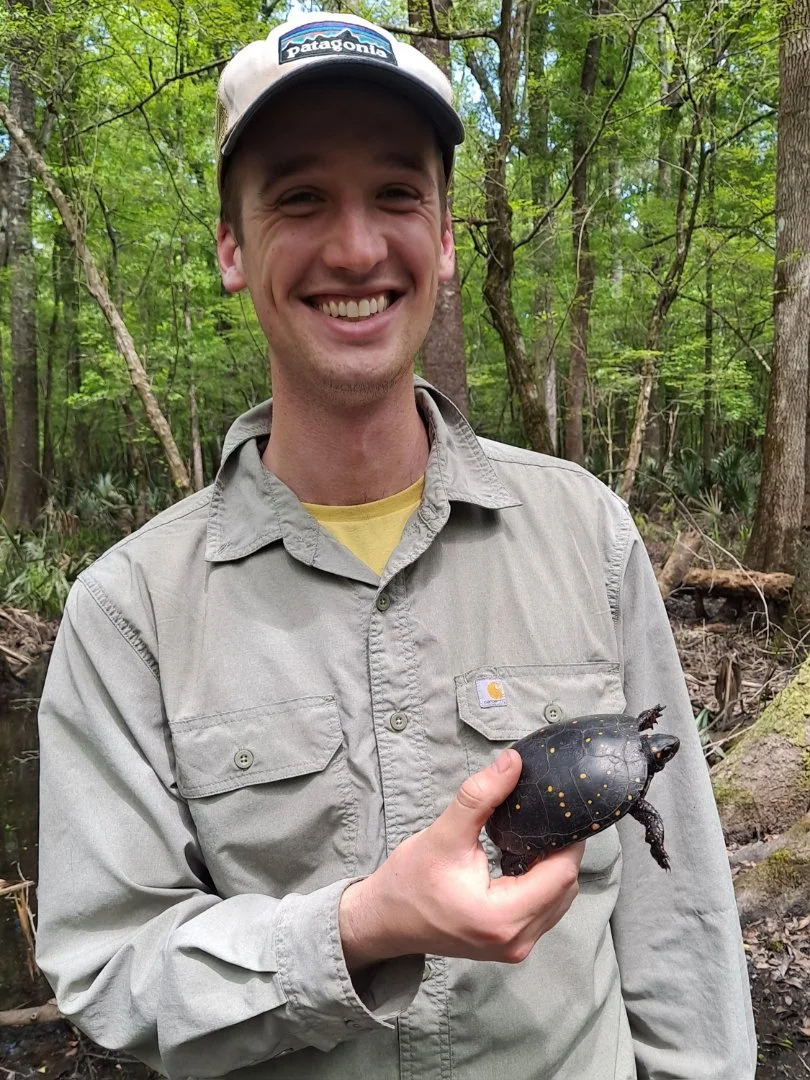About Me
My name is Alexander Greenwood. I was born and raised in southeastern Pennsylvania. At a young age, my parents would take me up to the Poconos of Pennsylvania every summer to fish and enjoy outdoor recreation, and so my passion and interest in wildlife began.
During high school, I immersed myself in animal care and education by volunteering at an animal shelter, caring for dogs and cats, and working part-time at Aardvark Animal Hospital as a veterinary assistant. I took on increasing responsibilities at the hospital, fueling my passion for learning and acquiring new skills. In addition to my pursuit of veterinary skills, I worked as a fishing instructor at a day camp. These experiences not only shaped my high school years but also fueled my enthusiasm for animals and the outdoors.
Temple Pre-Veterinary Club volunteer event
Desert iguana (Dipsosaurus dorsalis)
After graduating from highschool, I began studying at Temple University in pursuit of my bachelor’s of science with a major in biology and a minor in German. I planned to pursue my degree in biology while continuing to gain veterinary experience that would ultimately build my foundation for veterinary school. In my first year of study, I joined the Temple University Pre-Veterinary Club. I eventually served as the president of the club for 2 semesters. I organized several successful volunteer and fundraising events collaborating with numerous local organizations. During my first two years of college I continued to work at Aardvark Animal Hospital until I eventually attained the title of veterinary technician.
During the summer of my sophomore year I had the privilege of studying abroad with the School for Field Studies. I completed a Tropical Rainforest Ecology course in which we studied the rainforests of Australia and New Zealand. While completing these studies I gained experience in field research and wildlife biology. Additionally, we volunteered at several nature preserves engaging in habitat management activities.
In my third year of college, I began working in the Hsieh lab at Temple University as part of the undergraduate research program. Research in this lab was primarily concerned with biomechanics. In my first semester conducting research with the Hsieh lab, I participated in a project exploring the gate pattern of the Guatemalan tiger rump tarantula (Davus pentaloris). Using high speed video cameras, we tracked the gait patterns of several tarantulas before and after a standardized limb autotomy event. Ultimately the findings suggested that the tarantulas readily modify their gait and sustain little to no decrement in speed.
My next two semesters of research with the Hsieh lab focused on studying the linear intrusion patterns of granular media. This research was to set the foundation for studying how certain lizards are able to navigate sloped granular media such as sand dunes. At this time, I was able to begin working with several species of lizards endemic to Mojave desert of California. My fondness for reptiles and herpetology continued to grow. Unfortunately, my research was cut short by the Covid-19 pandemic which precluded all research activities on campus. I completed my last semester remotely and attained my degree after three and a half years of study.
Around this time, I set aside my passion for fishing to be replaced entirely by recreational herping and wildlife photography. I explored local habitats in pursuit of many of the endemic reptiles and amphibians that inhabit Pennsylvania. My first encounter with the timber rattlesnake in northeastern Pennsylvania was a defining moment that significantly altered my career trajectory. Additionally, as I worked on my applications for veterinary school, I realized more that working in a clinical setting would not be fulfilling for me.
Timber rattlesnake (Crotalus horridus)
Eastern hognose snake (Heterodon platirhinos)
Eastern hognose snake (Heterodon platirhinos)
Me handling an unusually placid black racer (Coluber constrictor)
Smooth green snake (Opheodrys vernalis)
Guatemalan tiger rump tarantula (Davus pentaloris)
I began to research masters programs in herpetology and got in contact with Doctor Thomas LaDuke at East Stroudsburg University. I was enthralled by the exciting prospect of being able to study reptiles and amphibians in the same area that I grew so fond of during my childhood. So I embarked on my pursuit of a masters degree in biology at East Stroudsburg University (ESU) in northeastern Pennsylvania.
While completing coursework in the many organismal subjects that so fascinated me, I became involved with local agencies to gain more experience as a herpetologist. I volunteered for the Great Swamp National Wildlife Refuge as a participant in wood turtle surveys. Additionally, I volunteered on bog turtle surveys for the Mid Atlantic Center for Herpetology and Conservation. Through these experiences, I was able to gain experience working with protected turtle species. I learned fundamental techniques for morphometric data collection and mark and recapture studies.
At this time, I also acquired the title of Monroe County Coordinator for the Pennsylvania Amphibian and Reptile Survey. Still currently holding this position, I am responsible for maintaining the accuracy of data reported. As I continue to explore and document the fauna of the state, I contribute many records to this database to fill out new blocks of information.
During my first field season at ESU I began working as a biological assistant under Doctor Thomas LaDuke. In this position, I worked alongside of Doctor LaDuke to monitor and collect data from Timber Rattlesnakes as part of the Timber Rattlesnake Assessment and Monitoring Project. Under his supervision, I gained experience in conducting standardized surveys for timber rattlesnakes, safely handling timber rattlesnakes, inserting pit tags, collecting morphometric data and swabbing for presence of Ophidiomyces ophiodiicola- the pathogen responsible for snake fungal disease. Additionally, I was able to gain experience tracking timber rattlesnakes in the Appalachian mountains using radio telemetry.
Working as a graduate assistant, I gained experience working in the ESU herpetological collection. As the assistant curator of the museum, I processed new intakes using standardized techniques to fix and preserve organisms. I was able to make several additions to the collection and manage the databases. Additionally, I was able to assist in teaching the undergraduate herpetology lab. I attended all of the field herpetology trips and assisted in the identification of herpetofauna. I also was attended the indoors herpetology lab helping undergraduates to work through dichotomous keys to identify characteristics of herpetofauna.
While I was originally to be conducting research funded by a long term grant, the funding was delayed and didn’t align with my graduation timeline. I decided to use my background interest in the reptiles of the Poconos to pivot and complete my masters thesis on the enigmatic eastern hognose snake (Heterodon platirhinos).
I decided to research the polymorphism of eastern hognose snakes in northeastern Pennsylvania. During my active season, I collected behavioral data from 76 eastern hognose snakes. I also collected body weight and body length measurements and took detailed observations on the phenotype. I was most interested in investigating whether or not there was any pleiotropic correlation in body weight or fitness with association to the different color morphs displayed by this species. While the results of my study did not indicate any signification association, the results may be more consistent support for the destabilizing force of negative frequency dependent selection.
Additionally, while completing my masters thesis, I worked full-time for the United States Department of Agriculutre Animal and Plant Health Inspection Service division as a biological field technician. In this position, I gained significant experience in conducting field research on the invasive spotted lantern fly. I gained significant experience in the identification of native and invasive flora and fauna.
My thesis also included detailed notes on various natural history observations I made on this species. Additionally, I was able publish a natural history note on the eastern hognose snake in Herpetological Review. This publication was the first known evidence of oviposition by eastern hognose snakes on railroad beds. This publication also touches on the various implications on conservation that result from the utilization of railroad beds by wildlife.
The skills and experience acquired during my master's studies have significantly shaped me into a devout field herpetologist. Through rigorous academic training and hands-on research opportunities, I have honed my ability to conduct detailed field surveys, accurately identify reptile species, and analyze ecological data. These experiences have not only deepened my passion for herpetology but have also equipped me with the expertise necessary to contribute meaningfully to conservation efforts and biodiversity research in the field. My master's program has been instrumental in fostering my dedication to understanding and protecting reptiles and their habitats, solidifying my commitment to advancing knowledge in this specialized field.
After completing my masters degree in biology, I began work as an environmental consultant. I have gained experience in phase I bog turtle surveys, wetland delineations, report writing and GIS mapping. Additionally, I have worked as a biomonitor on active construction sites monitoring for protected turtle species. It is my intention to continue to gain research skills in biology and to be able to use them to contribute to the conservation of wildlife and their habitats.
Following my experience biological monitoring, I sought opportunities to become deeply involved with herpetological research. In March of 2024, I began employment with the Orianne Society as a seasonal spotted turtle technician. While working this position, I have had the privilege to partake in various research projects and work with numerous species of herpetofauna. Living in the Southeast, I've taken every opportunity during my free time to explore and observe unique ecosystems and their denizens. These experiences have not only deepened my appreciation for herpetofauna but also enhanced my understanding of their ecological roles and conservation needs.
Southern hognose snake (Heterodon simus)
Eastern coral snake (Micrurus fulvius)
My passion for wildlife photography has continued to grow and perputally compels me to travel to new locations. I greatly enjoy showcasing herpetofauna that typically go undetected. By sharing my appreciation for these underrepresented organisms I hope to encourage others to adopt more positive perceptions of reptiles and amphibians and allay any undue fears.
